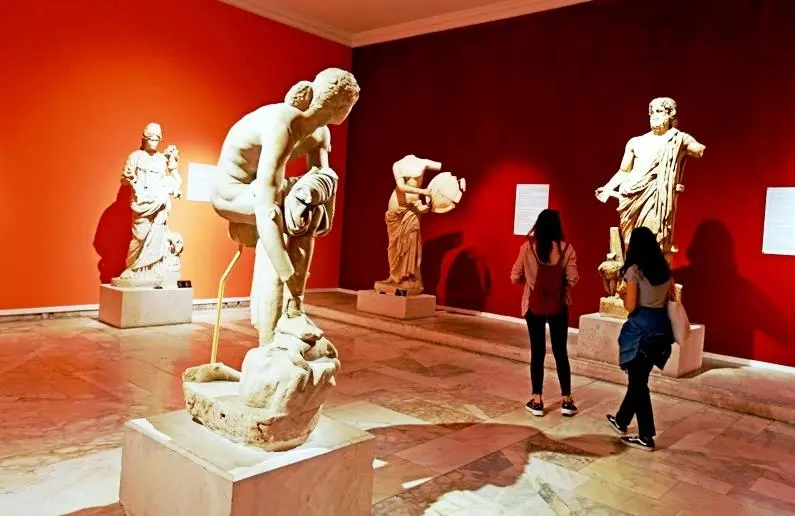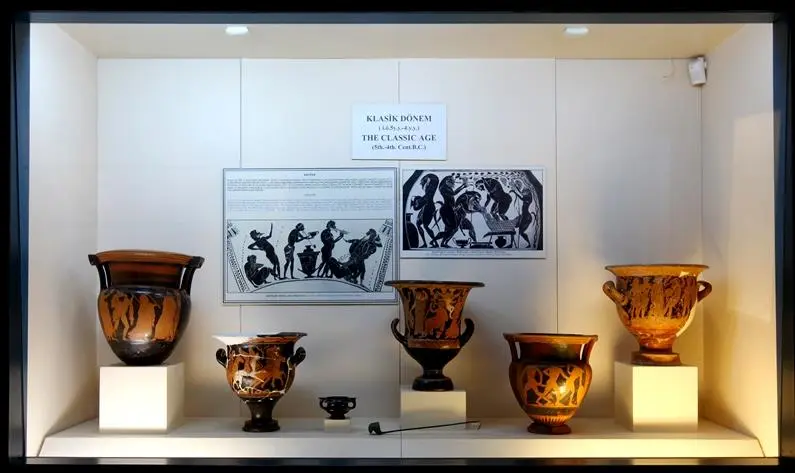Antalya Museum
Description
- Antalya Museum, where statues unearthed from the Ancient City of Perge also feature in other works, witnesses a period extending from the Lower Paleolithic Age to the Roman Period. Antalya Museum, dedicated to the three important ancient civilizations of the Mediterranean, "Lycia", "Pamphylia" and "Pisidia", living within the borders of Antalya, received the "Council of Europe Museum of the Year" award in 1988.
The museum, which was founded by teacher Süleyman Fikri Erten, emerged with the idea of protecting historical artifacts from occupation forces during World War I. In 1919, Fikri Bey applied to the Governorship of Antalya and had himself appointed as an honorary sar-ı tika (historical artifacts) officer, and firstly collected the works in the center and established the museum.
Antalya Museum, which was founded in the Alaeddin Mosque in Kaleiçi in 1922 and moved to its current building in 1972, spreads over an area of 30 thousand square meters. In addition to its 14 exhibition halls, children's section and open-air galleries, it also attracts attention with its garden.
Among those exhibited; There are natural history and prehistory collections, statues of gods and emperors, artifacts from funerary cultures, coins, mosaics and icons.
Antalya Museum can be considered among the most important museums in the world, especially with the Roman Period sculpture works found in Perge and the interesting and unique finds unearthed from the museum's rescue excavations.
Children's Section: In this hall, toys and games that children played long ago are displayed. A typical Anatolian city bazaar, many of which have disappeared, can also be seen.
Natural History and Prehistory Hall: In this hall, fossils that witnessed the formation of the world and artifacts that are the first finds of human history are exhibited. In this hall, there are also utensils made by the people who moved from hunting and gathering to the settled order and took the first step towards civilization, idols and statuettes belonging to their beliefs and the cube tomb exhibition which reflects one of the oldest burial traditions of Anatolia.
Ceramic Artifacts Hall: It is possible to see the aesthetic and technological development in terracotta artifacts with the progress of civilization in this hall chronologically from the Geometric period (1100 BC) to the Byzantine period (1100 AD).
Regional Excavations Hall: In this hall, where artifacts from regional excavations are displayed, it is possible to see examples of artifacts that have come to light as a result of archaeological excavations carried out by universities in the ruins located in the regions of Lycia, Pamphylia and Pisidia, and rescue excavations carried out by the museum.
Hall of Emperors: In this hall, the statues of the emperors, empresses and important political figures of the Roman period, dating back to the 2nd century A.D. and found in Perge, are exhibited.
Hall of Gods: In this hall it is possible to see the magnificent combination of sculpture and mythology. There are statues of gods and goddesses mentioned in Greek mythology, such as Zeus, the king of the gods, Aphrodite, the goddess of love and beauty, and Apollo, the god of sunlight.
Mosaic Hall: The "Philosopher's Mosaic" found in the Agora of Seleukeia, a Pamphylian city, is one of the most impressive works in this hall. In addition to the mosaics, a group of sculptures from the Perge sculpture workshop and the lower half of the statue of Heracles, the upper half of which is in the USA, can also be seen in this hall.
Perge West Street and F5 Fountain Hall: This hall houses the statue of Athena from West Street, the statue of Aphrodite from the square in front of the Hellenistic period towers, and a total of 13 statues excavated from the F5 Nymphaeum Pool located in the western corner of the northern baths.
Perge Theatre Hall: Seventeen monumental statues, friezes and some architectural fragments recovered from the stage building as a result of the archaeological excavations in the Perge Theatre are exhibited in this hall.
Sarcophagi Hall: Most of the sarcophagi exhibited in this hall were recovered from the Perge Necropolis excavations. Pamphylian type sarcophagi with medallions, columns and girdle, as well as fragments of the girdle sarcophagus and the sarcophagus of Hercules can be seen in this hall.
Hall of the Cult of the Dead: On the lower floor of the museum annex, examples of funerary traditions are exhibited. The carved burial scene found in the ancient city of Patara; the magnificent Dionysian sarcophagus found in Perge; a caryatid, pediment and friezes belonging to the Heroon of Limyra; statues and inscriptions belonging to the temple built by the Limyrians for the Ptolemaic family can be seen in this hall.
Hall of Coins, Small Works and Icons: The coins of Pamphylia, Pisidia and Lycia, the coins of Elmalı and the coins of the Principalities Period, Anatolian Seljuks and Ottoman coins are displayed in the coin exhibition section of this hall.
Ethnography Hall: The Ethnography Section of Antalya Museum consists of two large halls and a passage connecting these halls. In the ethnography halls, Turkish Islamic artifacts and the most beautiful cultural objects of our recent history and animations can be seen.
Cinevision Hall: It is the hall where information about Antalya province and its archaeological sites is given, the Antalya Museum Directorate is explained and various visuals can be seen.
Short Description
- Antalya Museum, where statues unearthed from the Ancient City of Perge also feature in other works, witnesses a period extending from the Lower Paleolithic Age to the Roman Period. Antalya Museum, dedicated to the three important ancient civilizations of the Mediterranean, "Lycia", "Pamphylia" and "Pisidia", living within the borders of Antalya, received the "Council of Europe Museum of the Year" award in 1988.












